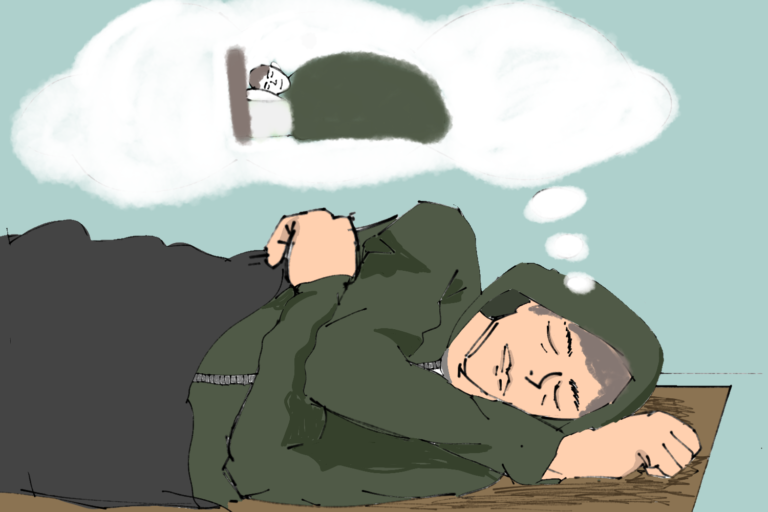San Francisco’s New Approach to Addressing Homelessness
A man sleeps on cardboard and dreams to sleep peacefully on a bed. In 2024, there were 3,969 unsheltered individuals experiencing homelessness in San Francisco.
Overview of the Homelessness Crisis
San Francisco is grappling with a persistent homelessness issue, which has persisted despite significant financial investments aimed at alleviating the problem. Mayor Daniel Lurie recently introduced an initiative titled Breaking the Cycle, devised to tackle this ongoing challenge. The effectiveness of this proposal in genuinely transforming the lives of those currently living on the streets remains uncertain.
Community Insights
Longtime resident Miriam Vu (1999) highlights a notable demographic shift in San Francisco, attributing rising living costs to the influx of technology companies. “As I look around my neighborhood, a lot has changed,” she remarked. “The owners of the houses are people who work for tech companies. The values of the houses have gone way up, so they’re the ones who can afford it. Blue-collar workers no longer live here.”
Vu further observes a rise in homelessness in neighborhoods such as Mission and Tenderloin, which has impacted her sense of safety. “While I don’t regularly visit areas in San Francisco with the worst cases of homelessness, I think homelessness expanded across the city following the pandemic,” she noted.
The Numbers Behind the Problem
Currently, 8,323 individuals are experiencing homelessness in San Francisco. Mayor Lurie’s strategy includes an emphasis on preventive measures, mental health services, addiction treatment, and enhancing public space cleanliness and safety. His plan aims to provide essential support services to those in need.
Proposed Solutions
- Add 1,500 beds to emergency shelters and stabilization centers.
- Expand sober living facilities, residential treatment options, and hotel voucher programs.
- Enhance shelter capacity and improve crisis response teams that engage with homeless individuals.
- Offer financial services and support to individuals at risk of becoming homeless.
Implementation Challenges
Deborah Bouck, a spokesperson from the San Francisco Department of Homelessness and Supportive Housing (HSH), acknowledges the challenges inherent in establishing new shelters. “It’s always challenging to bring new shelter into the community. People will benefit from fewer people in the streets, but when we open shelters in the neighborhood, people feel that they have too much in their district,” she elaborated.
“It’s always challenging to bring new shelter into the community. People will benefit from fewer people in the streets, but when we open shelters in the neighborhood, people feel that they have too much in their district. They feel overwhelmed and singled out for the unhoused.”
Funding for HSH primarily comes from the United States Department of Housing and Urban Development (HUD), which provides financial resources to facilitate the transition of individuals off the streets through outreach teams.
Future Prospects
While some homeless individuals remain hesitant to accept shelter offers, the urgency to find a sustainable solution to homelessness persists. “If you aim to move people off and away from the street, then temporary shelters may do the trick, but that is not a long-term solution,” warned Vu, highlighting the various underlying issues driving homelessness, including mental health and substance abuse.
Nonetheless, there is a glimmer of hope among residents. “I’m hopeful Daniel Lurie will succeed in his plans to tackle homelessness. He does have a comprehensive strategy to address homelessness,” expressed Len Lorilla, a commuter to San Francisco.



